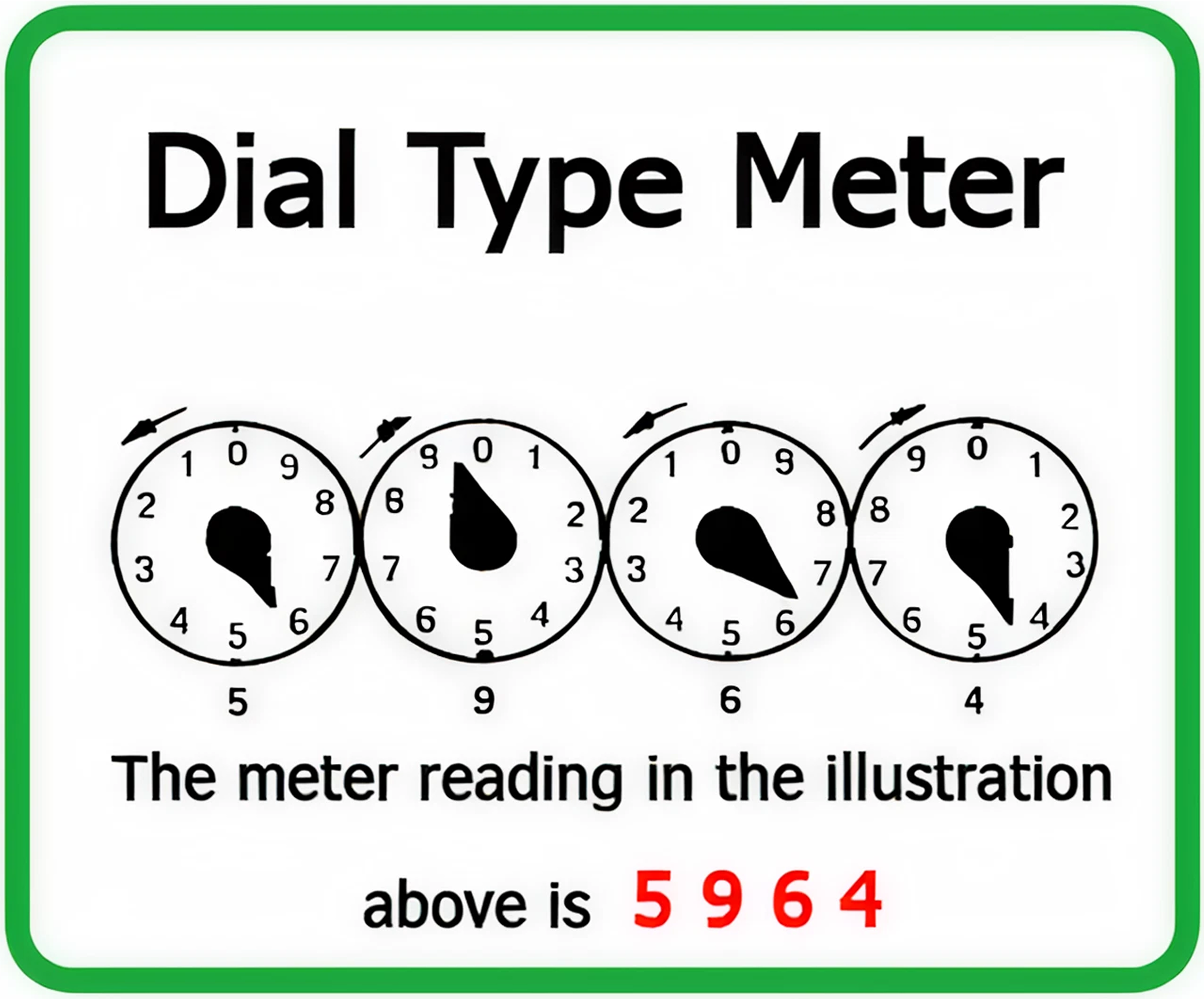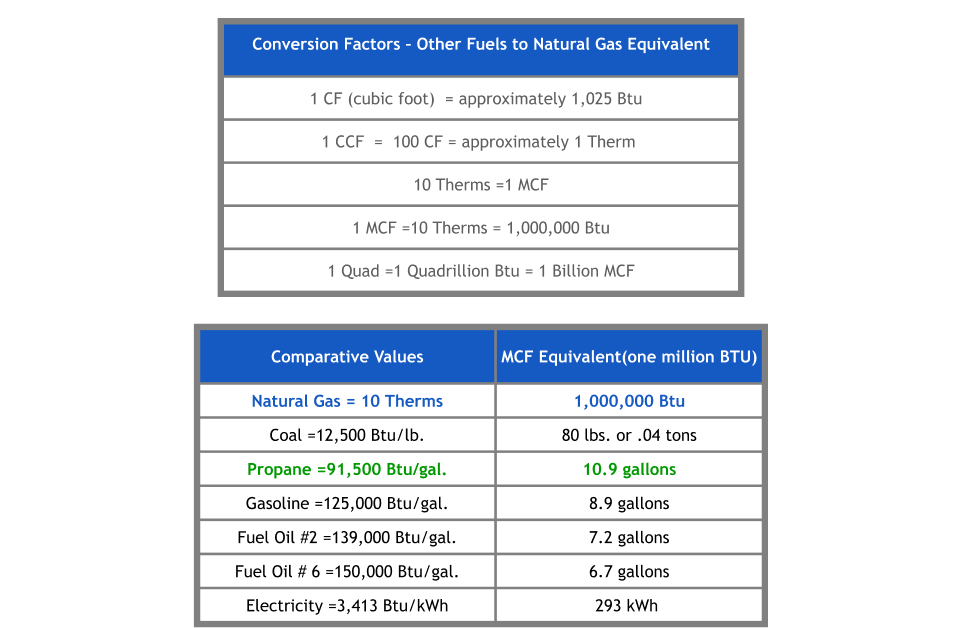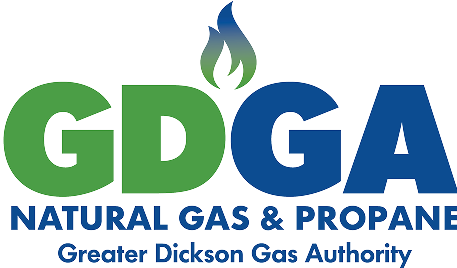Natural Gas
Purchase Natural Gas
Current Energy Costs- Do you know what you’re paying for the various forms of Energy?

Purchase Gas Adjustment Provision
Purchased Gas Adjustment for Rates 22, 35, 50, 52, 55, 57, 60, 65, 70, 71, 75, and 76 (See Complete Chart Here) Intent:
This Purchased Gas Adjustment provision is intended to adjust sales rates of Greater Dickson Gas Authority on a monthly basis (either up or down) to reflect variations in the Authority’s cost of purchased gas.
- Rates 22, 35
- The commodity Charge shall be subject to the Purchased Gas Adjustment of Greater Dickson Gas Authority.
- Rates 50, 52, 55, 57, 60, 65, 70, 71, 75, 76
- The cost per therm of gas sold to customer that is included in the Commodity Charge shall be subject to the Purchased Gas Adjustment of Greater Dickson Gas Authority.
Billing Basics
Many of our natural gas customers keep a close watch on their monthly usage. When a gas bill appears excessive a re-read is requested. The information below on how to read your meter (dial type) will help you verify the accuracy of the meter reading.
Dial Type Meter
Your gas meter is read from the row of four to six dials appearing in the index window (dials in the other row are for testing). Notice how each dial rotates in the opposite direction from the dial next to it. Read each dial in the direction shown by the arrows. If the dial hand is between the numbers, use the lower one (if between 9 and 0, read 9). If the dial hand is exactly on a number, look at the dial to the immediate right. If its dial hand is not passed zero, record the lower number for the dial in question. While the number of dials on your meter may vary, the procedure for reading them is the same.


Digital Type Meter
We Need Your Help
- Making a key available to meter readers if inside a fenced or within a enclosed location!
- Being sure the meter dials can be seen through shrubs. Always keep the gas meter visible.
- Seeing that the “welcoming committee” (any dogs or pets) are kept indoors, or on a leash.
Cubic Foot (cf)
CCF
MCF
BTU (British Themal Unit)
Therm (th)
Dekatherm (Dth)
The heating value of gas (or its calorific value) is an important factor in its purchase and sale. This “heat content” of the fuel is the principle measure of its ability to perform a heating service.
Gas is usually sold on a “therm” basis, which necessitates an accurate handling of its calorific value. So basically, a therm is a quantity of gas with the heating value factored in. The Interstate Pipelines from which Greater Dickson Gas Authority receives its gas determines this calorific value, or BTU factor and passes the value on to us. This value is then used in buying and selling natural gas.
GDGA’s BTU factor ranges from 1.030 to 1.040. Its average value is 1.032. A higher BTU factor results in fewer cubic feet of natural gas required to produce a given amount of heat; a lower BTU factor results in more cubic feet of natural gas requried to produce the same amount of heat.
- We multiply the reading in hundred cubic feet by the monthly BTU factor given to us by the Pipeline to determine the amount of therms used.
- We then bill using the cost as given in the appropriate rate sheet.
- For example, a customer has a natural gas hot water heater. This customer would be in the Rate 22 Class. The meter shows that 12 hundred cubic feet (or 12ccf) of natural gas had been used during November. The interstate pipeline has determined that the BTU factor is 1.038 for this particular billing period. What will be this customer’s bill?
- Number of therms = (usage in hundred cubic feet) x (BTU Factor) = (12) x (1.038) = 12.46 therms (rounded nearest whole number) = 12 This customer’s bill is calculated as follows:
- 12 therms x $1.18985 per therm = $14.28 (Rate 22 commodity charge & November 01 PGA adjustments) + Customer Charge = $8.00 (October) Total Amount of Bill = $22.28
Current Rates
Costs Comparison
The cost of various forms of energy are usually calculated in different ways and this makes it difficult for the average consumer to compare the difference between one form and another. When the retail price of energy (Btu) to the consumer is compared on the same basis, the cost looked like this:

Natural Gas Facts
Natural gas was formed millions of years ago when most of the earth was covered by water. Plant and tiny animal remains were mixed and layered with sand and mud. When the Earth underwent natural but drastic changes to form today’s landscape, the intense heat and pressure transformed these fossils into hydrocarbons-chemical compounds of hydrogen and carbon atoms.
Depending on the arrangement of the atoms, what were once sea plants and animals are now natural gas or crude oil deposits contained in the earth’s crust. Natural gas (a combustible, gaseous mixture of simple hydrocarbons) is a very light portion of petroleum, which includes both natural gas and crude oil. Natural gas may rise to the surface through natural openings in the earth’s crust or can be brought to the surface through man-made wells.
Humans discovered thousands of years ago that this naturally occurring resource could be burned and used for heat and light. Today, natural gas continues to be safe, efficient, environmentally friendly and abundant source of energy, and new uses for it are still being discovered. In its natural state you can’t see or smell natural gas. It is colorless, odorless and lighter than air. Mercaptan, a chemical odorant, which smells like rotten eggs, is added to natural gas so it can be smelled if it leaks.
Natural gas is made up mostly of methane, which has a simple hydrocarbon structure of one carbon atom and four hydrogen atoms (CH4). This means it burns easily and emits less pollution.
Natural gas will not by itself burn. Combustion can occur only when there is a mixture of gas and air – containing between 5% and 15% natural gas and between 85% and 95% air.
When natural gas is burned, it produces mostly carbon dioxide and water vapor-the same substance emitted when people breathe. Compared with other fossil fuels, natural gas emits the least amount of carbon dioxide into the air as it is used-making natural gas the cleanest burning fossil fuel.
Get in Touch
If you would like more information about our Natural Gas services, please complete the information below and submit to us so we can contact you. Thank you!

